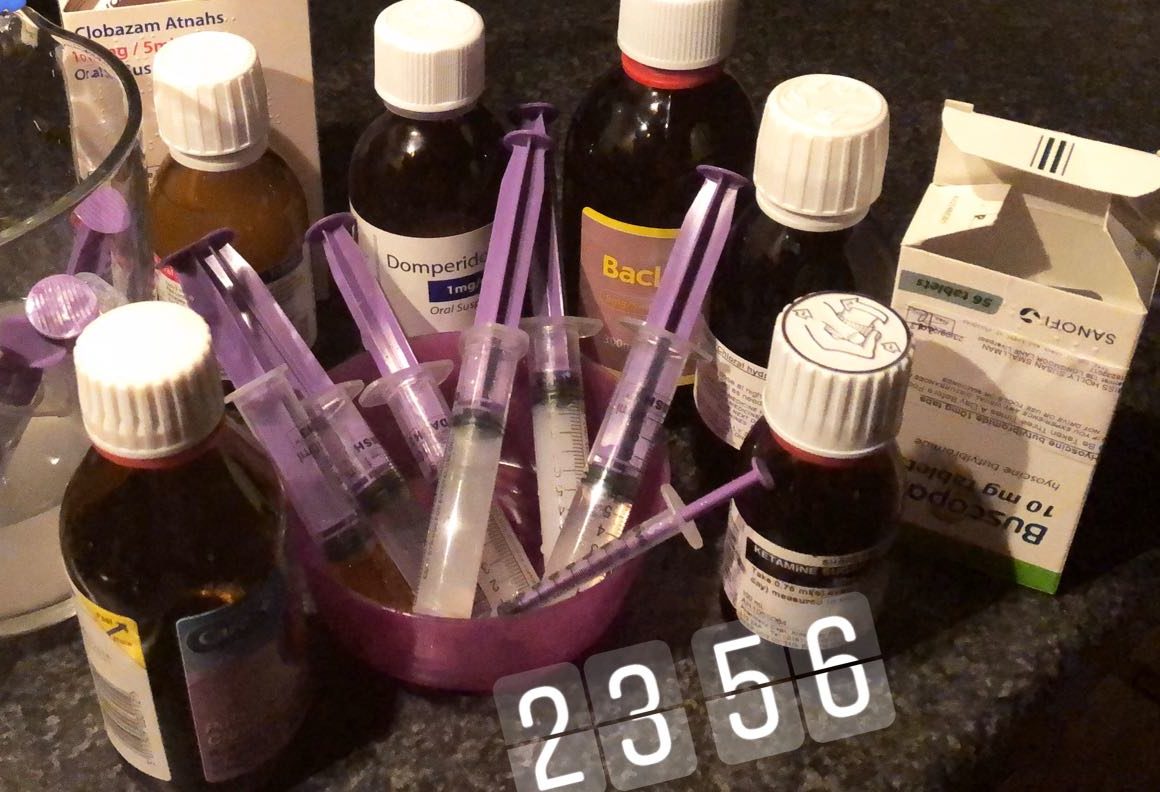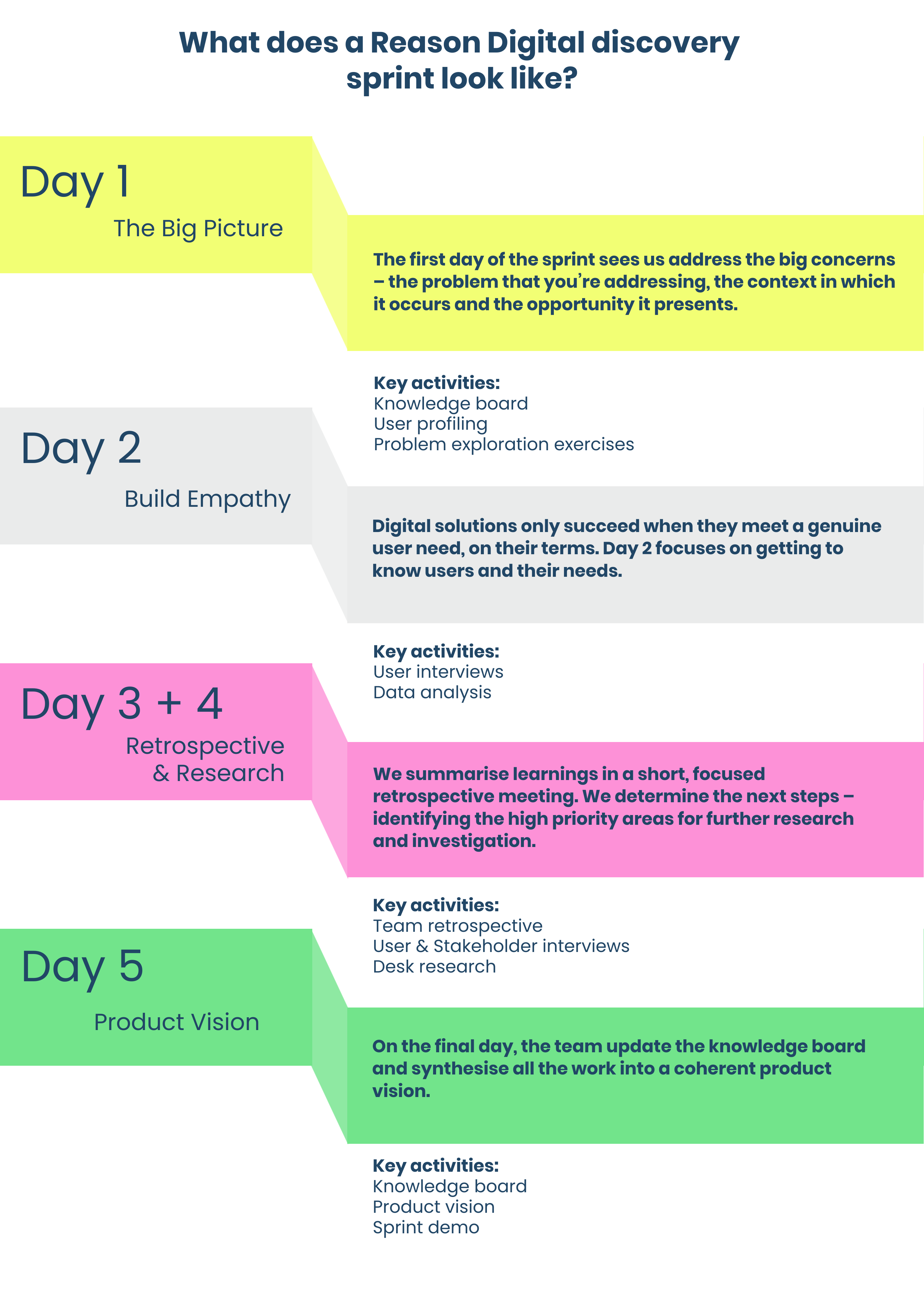The devil is in the discovery: a charity guide to digital discovery
Humans are deeply curious by nature. Discovery provides an opportunity to put that curiosity to good use. And yet, we see investment go into digital services that sit on a virtual shelf, unused whilst society goes about its business unchanged and unimproved. As one of the most fascinating and fundamental stages when building technology that successfully changes and saves lives, discovery is a must....
Draw a vase
You may have heard of the classic ‘draw a vase’ UX exercise (UXercise, if you will).
Designers are asked to draw a vase. After a while, participants share their results. As is the nature of a vase, sketches all look more or less the same.
Participants are then asked to forget about the vase, and to instead draw a way to ‘enjoy flowers in the home.’
The designers reveal vastly different sketches – from hanging baskets to terrariums. One abstract thinker even draws floral wallpaper. See where this is going?
This simple exercise demonstrates the essentiality of a discovery phase when creating any digital product or experience. Leave it out, and your own assumptions could lead you to create a vase when your users actually need floral wallpaper.



What is discovery?
The ‘discovery’ process is a staple in many industries, not just digital. Take the legal sector, for example. At the beginning of any trial both parties have to surrender evidence and reveal what they know.
At the start of any charity digital project, we don’t know the full extent of our partner’s knowledge of their user base. So, just like before a trial (although hopefully less sinister) time is allocated for the charity to reveal existing data. This is where discovery begins. The main goal of discovery is understanding: of the problem, of the people who will be using the product, of potential risks, and of what success would look like.
Walk a mile
We saw the importance of discovery when working on Medicines for Children, a medicine management app for parents and carers of seriously ill young people.
Imagine for a second, that you have three children; your youngest has complex health needs that need to be managed meticulously. All three children require your attention almost constantly, they test your patience on the regular and need emotional support day in, day out. Put yourself in the shoes of someone experiencing all of this… plus life in general. Personally, I can’t. And even if you can, you might be wrong. This is where discovery comes in.
We needed to understand what the average day looks like for a group of incredibly busy and often overwhelmed parents.

Around the clock
Just one nugget of insight gained during discovery was the demand on time. Parents showed us the ‘clock’ apps on their phones. Eyes widened as we saw seemingly endless reminders lined up.
We scrolled… and scrolled.. and scrolled… and saw that these alarms spanned almost every hour of the day, notifying these super-parents and super-carers to administer vital medication to their child.
The team showed screenshots of the alarms to the pharmacists, an important group of stakeholders included in this tech for good project, and relayed personal accounts of spending an exhausting 18 hours a day administering medicines. This was news to the pharmacists. For them, involvement with each child lasted five minutes. They had never been witness to just how much of parents’ time and importantly, energy, is spent tending to their child’s medication schedule.
This discovery phase opened eyes to the harsh realities of parents’ day to day lives. Using personal insights to show the impact an app would have, key stakeholders were refocused and filled with a desire to make this app as valuable as it could be, for those that need it.
How to deliver discovery
Whilst this is a peek into one digital discovery story, as is the case with many digital project processes, a ‘Discovery Phase’ can seem quite an abstract concept, and you may be wondering what activities take place. At Reason, we collaborate with our charity partners on ‘Discovery Sprints’, which take place over the course of a week. Here’s a quick snapshot of what one of these weeks looks like:

Beware of assumptions and don’t rely solely on stats
It’s time to go against our instincts, and leave all prior assumptions from all parties at the door. Ideally during discovery you should be solution-agnostic (tech-agnostic in particular) to avoid revving up at the start line, ready to speed off in the wrong direction. Tech preferences and biases before the discovery phase are a distraction, and often result in people ignoring important data that doesn’t lend itself to developing their preferred digital solution, but that would lend itself to creating a useful product.
Without an in-depth process to gather qualitative insights from your service users, there is a risk of relying on statistics. In some cases, stats are your friend and are especially valuable when getting key stakeholders on board with your vision. But when building something to be used by a group of people, it would be madness to not converse with those people.
Miguel Ruiz said, “We make all sorts of assumptions because we don’t have the courage to ask questions.” When there are vulnerable people, or potentially lives at risk, we must have that courage. Discovery interviews can uncover shocking and personal truths which are more insightful than a shallow stat such as “13% of users reported experiencing X pain point”. Due to the nature of our sector, a worst case scenario could mean one person having trouble accessing your product results in tragedy, or even death. Let’s be open to proving ourselves wrong, or indeed, right.
Discovering for good
With limited discovery time, a project team is not going to reveal absolutely everything. If you’re developing a tool to help people apply for benefits, don’t waste time researching what TV channels applicants like to watch, or where they do their shopping. Inefficient discovery can even put you in danger of building something that makes users’ lives even worse.
A great discovery phase will uncover the right amount of useful information to reduce user risks to a safe level and establish trust throughout the project team. At the end of discovery, everyone involved will be aligned to one clear vision, ready to kick-start a cohesive digital project and make the most life-changing floral wallpaper the world has ever seen.
